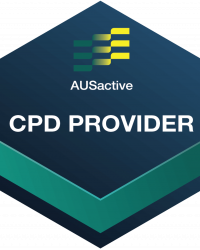Wunda Chair Repertoire
Challenge:
Abdominal Work: Teaser
Alternate Names
Reverse Teaser
Derived From
Mat Pilates: Teaser
Primary Element
Challenge
Using full body control, this exercise demands strength and stability from the torso, shoulder girdle and legs all moving together with control and precision.
Secondary Element
Strength
To strengthen the abdominal muscles and improve hip flexor control.
Tertiary Element
Stability
Stability is required in the lift and return phase of the movement, from the shoulders controlling the pedal, to the torso engagement and the legs being supported to hold and extend at the top end position.
Repetitions
4-6
Apparatus Setup
Suggested springs
- Exo Chair by Balanced Body
- Cactus style number system
- One spring on setting 2
- Cactus style number system
- Resistance: light
Scan the apparatus once the client is moving for correct set up (Clain Pilates, 2002).
- Pedal position first – check the dowl is secure if split pedal
- Springs second
- Handles or small apparatus such as a ball or Magic Circle last
Plane of Motion
Sagittal
Targeted Muscles
Abdominal muscles – transversus abdominis, the deepest layer of abdominal muscles. Its role is to support the torso by maintaining abdominal wall tension which stabilises the spine and pelvis. Rectus abdominis or the ‘six-pack’ muscles are also used in the flexion or forward lift part of the movement.
Warnings
Not suitable for some shoulder and spine pathologies, especially where the client finds it difficult to position the hands back onto the pedal with the shoulders externally rotated.
Execution
Start seated upright on top of the chair facing away from the pedal. Try to position yourself or the client towards the edge of the chair so there is space to roll back through the pelvis.
Place the feet in a table top position or fully extended and adducted. Reach the hands back to hold the pedal with the fingers facing outwards. Press the pedal down gently, trying to touch the lower back on the chair. Keep the lower back on the chair and roll up lifting the pedal engaging the abdominals and then lifting higher through the torso, either leaving the legs in tabletop or extending them fully if not already. Start the return phase back to the start of the exercise from the torso moving which then connects back to the pedal moving downwards. Repeat for the intended repetitions with a static hold at the top to finish.
Observations
Do a body scan of the client taking note of the following points
Pelvis
- Are the hip bones even horizontally or is the client leaning to one side?
- Is the pelvis tucked posterior?
- Is there room on the chair for the client to roll back?
Legs
- Are the knees bent into a table top position or can the double leg extension be held still throughout?
Apparatus
- Is the pedal falling to the base of the chair? Increase the spring load so the client can control the pedal and feel supported by the spring load
Learning Style Technique Cues
Auditory – word associations that connect mind and body
- Maintain the C curve throughout the movement until the very last moment at the top position
- Initiate the movement by engaging the abdominals when moving the pedal down and rolling back, as well as when lifting and rolling up and forward
- Say the client’s name when you’re about to interact with them
Visual
- Imagine the supine variation of this exercise on the Mat where you would need to roll up and reach your hands towards the ceiling or forward towards your feet, the Mat Pilates Roll Up
- You may demonstrate a part of the movement as a visual representation for the client to see
Kinaesthetic
- Feel the abdominals draw in when pressing the pedal away
- Move the bottom of your ribcage in at the front and expand it at the back as you roll and lift up
- Feel the pivot point of the movement at the centre of the torso, using the abdominals to control the movement and add the load of the legs extending as the challenge to the abdominals
Modifications and Variations
Regress the exercise by
- Increasing the spring resistance to provide more assistance from the pedal on the lift up phase of the movement
- Stand behind the client so they feel supported as they move backwards and down. Placing a hand under their back or shoulder can also help mimic the support on the way down and the push on the way up
- Working on Mat Pilates: Teaser Preparation
- Working on Wunda Chair Abdominal Work: Teaser Preparation
Progress the exercise by
- Reducing the spring resistance
- Adding repetitions and/or pace
- Working towards Wunda Chair: Side Flexion with Teaser
Series and Transitions
Finish the exercise by sitting up and forward so the feet come back to the prop or the ground.

